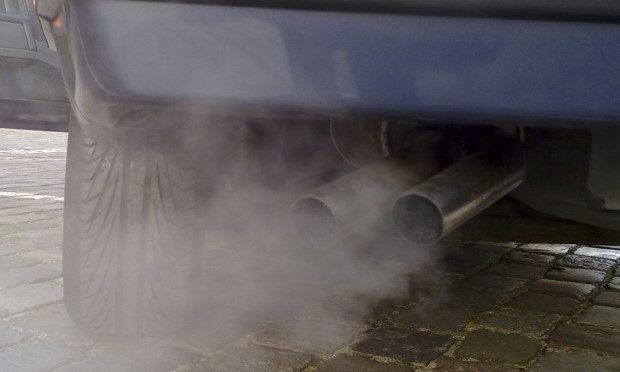Town Hall to set out ‘clear vision’ to improve air quality in Hackney

Hackney Council this week released a draft version of an action plan to improve air quality in the borough, alongside statistics which reveal the scale of the challenge in the years ahead.
Underlining the links between poor health and polluted air, environmental services strategy manager Sam Kirk told councillors that officers had gone further than City Hall guidance in creating the statutory document, which has a focus on bringing down emissions from construction – the largest local cause of inhalable coarse particles (PM10).
Hackney has been found to have the sixth highest mortality rate from air pollution of 418 local authorities, according to transport chief Cllr Jon Burke, who in introducing the report pointed to a joint study by Queen Mary’s and Edinburgh Universities and King’s College which reveals that the borough’s children show signs of stunted lung development owing to poor quality air.
Burke said: “In excess of 50 per cent of the particulate matter associated with the operation of motor vehicles in Hackney does not come from the tailpipe at all, so it is imperative we have an air quality strategy that looks at the various components and contributing factors to poor air quality in Hackney in great detail.
“This document has also been delivered at the same time as Sam Kirk has led the team to deliver residual waste restriction, which is one of the most significant service changes due to be undertaken by this council in the memory of most councillors in Hackney.
“This piece of work in combination with the many other programmes that we are undertaking as a council to address the scourge of air pollution in this borough could not be more timely.”
Kirk added that the borough would be adopting World Health Organisation guidelines for levels of PM10 and fine particulate matter (PM2.5), pointing out that much can be done to reduce nitrogen dioxide emissions, of which around 50 per cent emanates from road transport, without addressing particulates.
The plan holds 42 actions in total across nine themes, under which Hackney will continue to carry out air quality monitoring and other statutory duties, as well as mitigate particulate concentrations from developments and buildings.
Around 37 per cent of PM10 across the borough can be accounted for from construction alone, with air quality in this area to be bettered through controls in the planning system and the introduction of a code of construction that would be more stringent than that envisaged by City Hall.
While construction is a major source of PM10, road transport is the second largest contributor, making up a quarter of emissions, while also being the highest source of PM2.5, making up just under a third of these kinds of emissions.
The Town Hall is also planning a series of public health and awareness raising drives, giving as an example an aim to shift attitudes towards the burning of solid fuel.
The borough also plans to re-evaluate delivery servicing and freight vehicles, which come with high nitrogen dioxide emissions, as well as to improve its own fleet, which has a range of light and heavy-duty diesel engines alongside its 59 electric vehicles.
The plan also points to ‘localised solutions’, including Low Traffic Neighbourhoods (LTNs), traffic filters, parking schemes and biodiversity projects, while continuing to incentivise healthier modes of transport as well as electric and other low emission vehicles.
Two other areas beyond City Hall guidance have been added to the strategy: Schools & Communities and Lobbying. Under the former, the borough will begin to implement projects aimed at protecting those most at risk from poor air quality, while aiming to influence regional and national organisations on any issues beyond the local authority’s influence to enable the introduction of progressive improvement measures.
According to London Atmospheric Inventory statistics (LAEI), both types of particulate matter could be exceeding National Air Quality Objective annual mean levels for both types of pollution along major roads with high volumes of traffic, with the A12 in particular a hotspot, with levels also exceeding limits in the south and south western parts of the borough away from major roads.
Pollution levels are highest around main roads, according to the strategy, with the highest levels mainly appearing in the vicinity of the north-south running A10, the A12 at Hackney Wick, and within Shoreditch.
The largest emission source of nitrogen oxides is road transport, which makes up 64 per cent of levels. 27 per cent of the emissions are TfL buses, while diesel cars make up 22 per cent. The second highest source for such pollution are industrial or commercial heat and power sources, which emit 16 per cent of the gases in Hackney.
You can find the draft plan, which goes out to consultation on 14 December, here .
